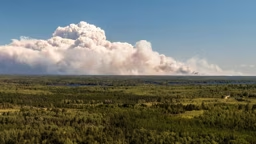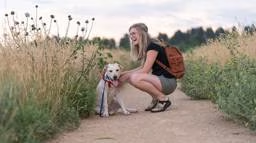The first time I traveled alone to my grandmother’s cabin, my mother went through her litany of reminders while I packed: “I wrote everyone’s phone number in your book; whenever you see someone working, offer to help; listen to your grandmother; don’t forget your please and thank yous …,” and then a last warning, “And don’t eat anything that doesn’t come out of a can or a box.”
My grandmother, you see, was a forager. She wandered through the woods like a bear, tasting this and that, digging roots, snapping up mushrooms, clipping leaves or shoots and putting them in her basket. The berries she pretty much ate as she went.
If there was one over-arching difference between my mother’s and my grandmother’s existential world view, it boiled down to how they walked in the woods. My grandmother walked among the trees pointing out the things to eat. My mother pointed out the things not to eat.
My mother harped about burying fish guts and securing garbage so we wouldn’t draw bears or wolves to the cabin. My grandmother set pies on the windowsill after baking. Often the bears arrived before the pies had cooled.
My grandmother, you see, was a forager. She wandered through the woods like a bear, tasting this and that, digging roots, snapping up mushrooms, clipping leaves or shoots and putting them in her basket. The berries she pretty much ate as she went.
If there was one over-arching difference between my mother’s and my grandmother’s existential world view, it boiled down to how they walked in the woods. My grandmother walked among the trees pointing out the things to eat. My mother pointed out the things not to eat.
My mother harped about burying fish guts and securing garbage so we wouldn’t draw bears or wolves to the cabin. My grandmother set pies on the windowsill after baking. Often the bears arrived before the pies had cooled.
That spring … not long after I arrived, my grandmother took me into the forest to look for fiddlehead ferns, so-called because when one first emerges – with feathery leaves wrapped tightly around the stalk – the shoot looks just like the tuning head of a violin.
We also picked mushrooms that day. Mushrooms were, of course, the main reason my mom preferred I stick to heavily processed foods when staying at my grandmother’s. But that day, we came across a cluster of little gray fungi that looked similar to Cousin It from “The Addams Family.” My grandmother called them “shaggy old men” and into the basket they went. That night, she cooked the ferns and the mushrooms together in butter and garlic. Sorry Mom, but it was one
of the best things I’ve ever tasted.
We also picked wild asparagus, which looks much like commercial asparagus when it emerges. In the fall, its delicate leaves flame imperial gold. Stinging nettle and thistle, also gathered from along the roads, were both dried for tea. In summer, the forest gave strawberries, blueberries, gooseberries and raspberries. In the deep woods, wild ginseng and its close cousin, sarsaparilla, grew. Both have star-like flower clusters that mature into waxy berries. Ginseng’s are crimson, while sarsaparilla’s can be almost purple. My grandmother used the root of the sarsaparilla and the dark waxy leaves of the wintergreen plant to brew root beer.
We also picked mushrooms that day. Mushrooms were, of course, the main reason my mom preferred I stick to heavily processed foods when staying at my grandmother’s. But that day, we came across a cluster of little gray fungi that looked similar to Cousin It from “The Addams Family.” My grandmother called them “shaggy old men” and into the basket they went. That night, she cooked the ferns and the mushrooms together in butter and garlic. Sorry Mom, but it was one
of the best things I’ve ever tasted.
We also picked wild asparagus, which looks much like commercial asparagus when it emerges. In the fall, its delicate leaves flame imperial gold. Stinging nettle and thistle, also gathered from along the roads, were both dried for tea. In summer, the forest gave strawberries, blueberries, gooseberries and raspberries. In the deep woods, wild ginseng and its close cousin, sarsaparilla, grew. Both have star-like flower clusters that mature into waxy berries. Ginseng’s are crimson, while sarsaparilla’s can be almost purple. My grandmother used the root of the sarsaparilla and the dark waxy leaves of the wintergreen plant to brew root beer.
Grandmother bought her wild rice (harvesting rice is a young person’s activity), but she did pick wild cranberries. Sadly, the location of the bog she picked was her secret that was never told before she passed away.
Today I still gather many of these wild edibles with my children – everything except mushrooms. I do not pick mushrooms without an expert guide.
The key with wild food gathering is to be careful. But don’t let fear stop you from enjoying the many delicious wild foods in your area. A great deal of satisfaction and fun – and real culinary treasures – can be found growing just outside your cabin door.
Click here for a great blueberry recipe
Jeff Forester, author of “Forest for the Trees, How Humans Shaped the Northwoods,” is also the Executive Director of Minnesota Seasonal Recreational Property Owners Coalition. He looks for edibles every chance he gets. Dinner guests are almost always in for some interesting surprises.
Today I still gather many of these wild edibles with my children – everything except mushrooms. I do not pick mushrooms without an expert guide.
The key with wild food gathering is to be careful. But don’t let fear stop you from enjoying the many delicious wild foods in your area. A great deal of satisfaction and fun – and real culinary treasures – can be found growing just outside your cabin door.
Click here for a great blueberry recipe
Jeff Forester, author of “Forest for the Trees, How Humans Shaped the Northwoods,” is also the Executive Director of Minnesota Seasonal Recreational Property Owners Coalition. He looks for edibles every chance he gets. Dinner guests are almost always in for some interesting surprises.
GENERAL RULES FOR GATHERING WILD EDIBLES
? Do not eat anything you cannot positively identify. Some edible plants have close cousins that are very toxic. Wild carrots and hemlock, for instance, look very similar.
? Like my grandmother, become an expert on the poisonous plants in your area.
? When trying a species for the first time, eat only a small amount. Some edible plants may not taste good to you or may be hard on your digestive system.
? Do not serve wild plants without telling your guests.
? There are many old wives’ tales concerning how to know if a plant is edible, and most of them are bunk. Do not eat a plant without explicit knowledge from a reliable source that it is safe.
? Never pick it all. A good rule of thumb is to pick half and leave the rest. Endangered plants like wild ginseng should not be picked at all.
? Pick during the correct season. Some plants are edible when they emerge, but become inedible as the season progresses. Rhubarb is the most common example.
? Pick and use the right part of the plant. Some roots are edible, but the seeds and leaves are toxic.
? Wash your wild foods well.















